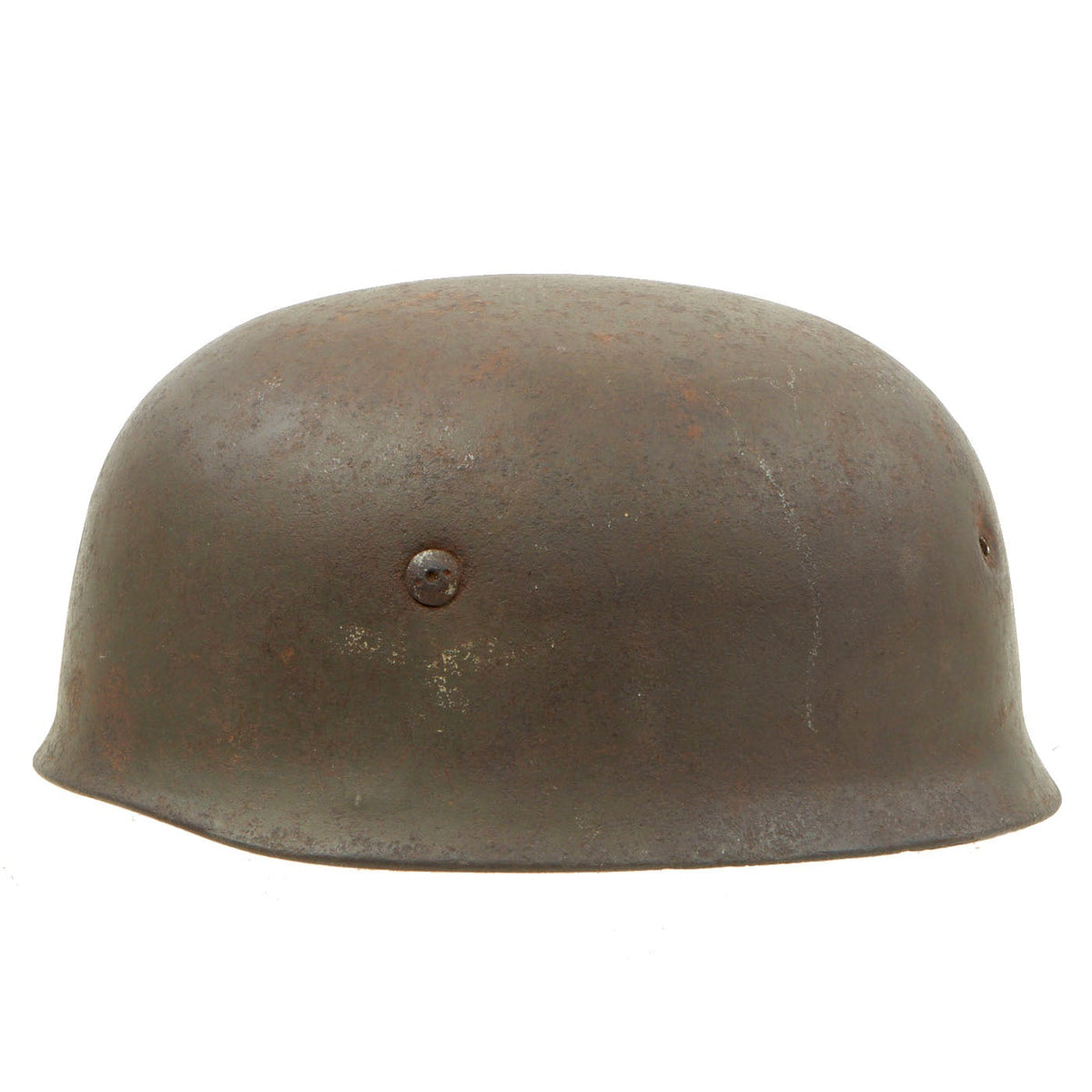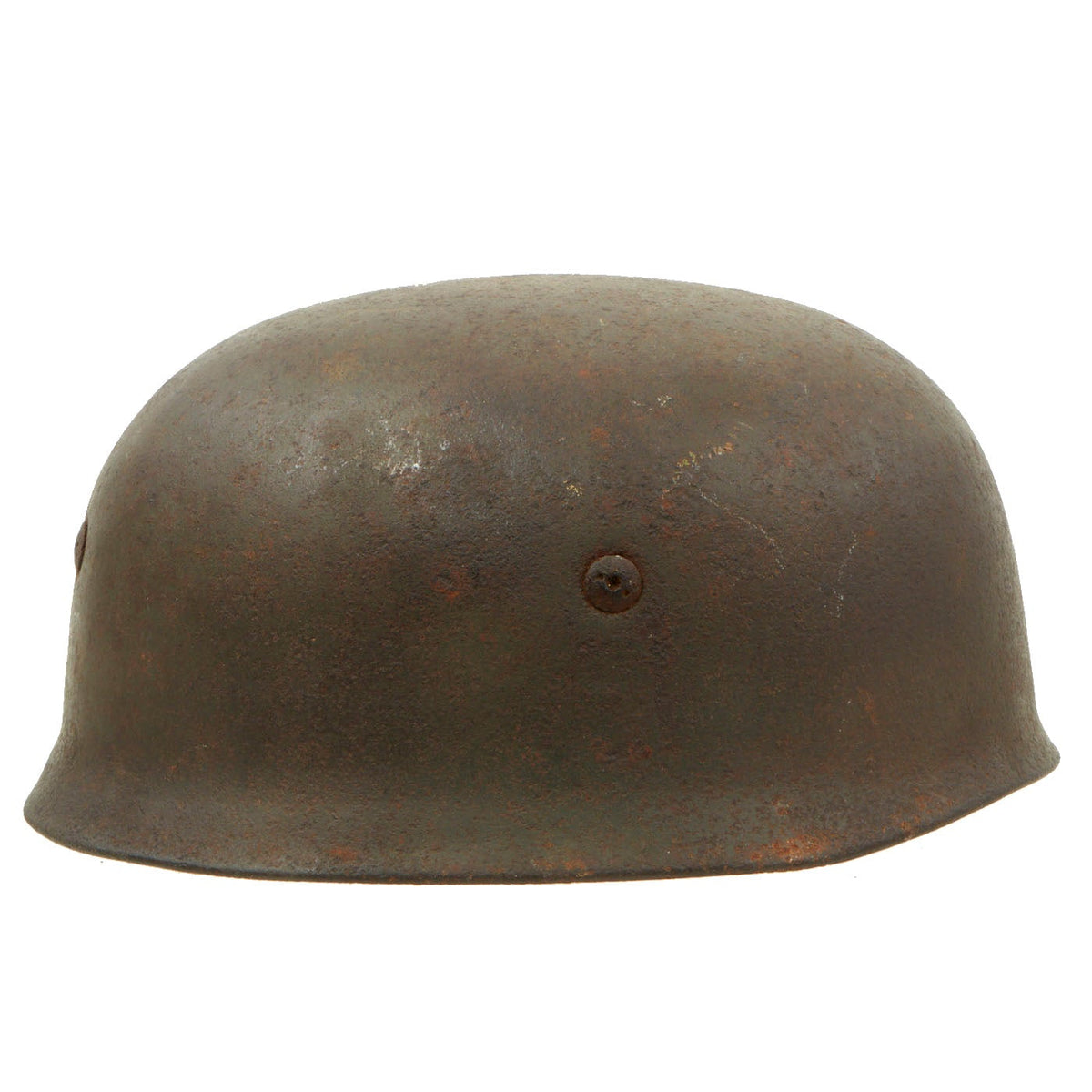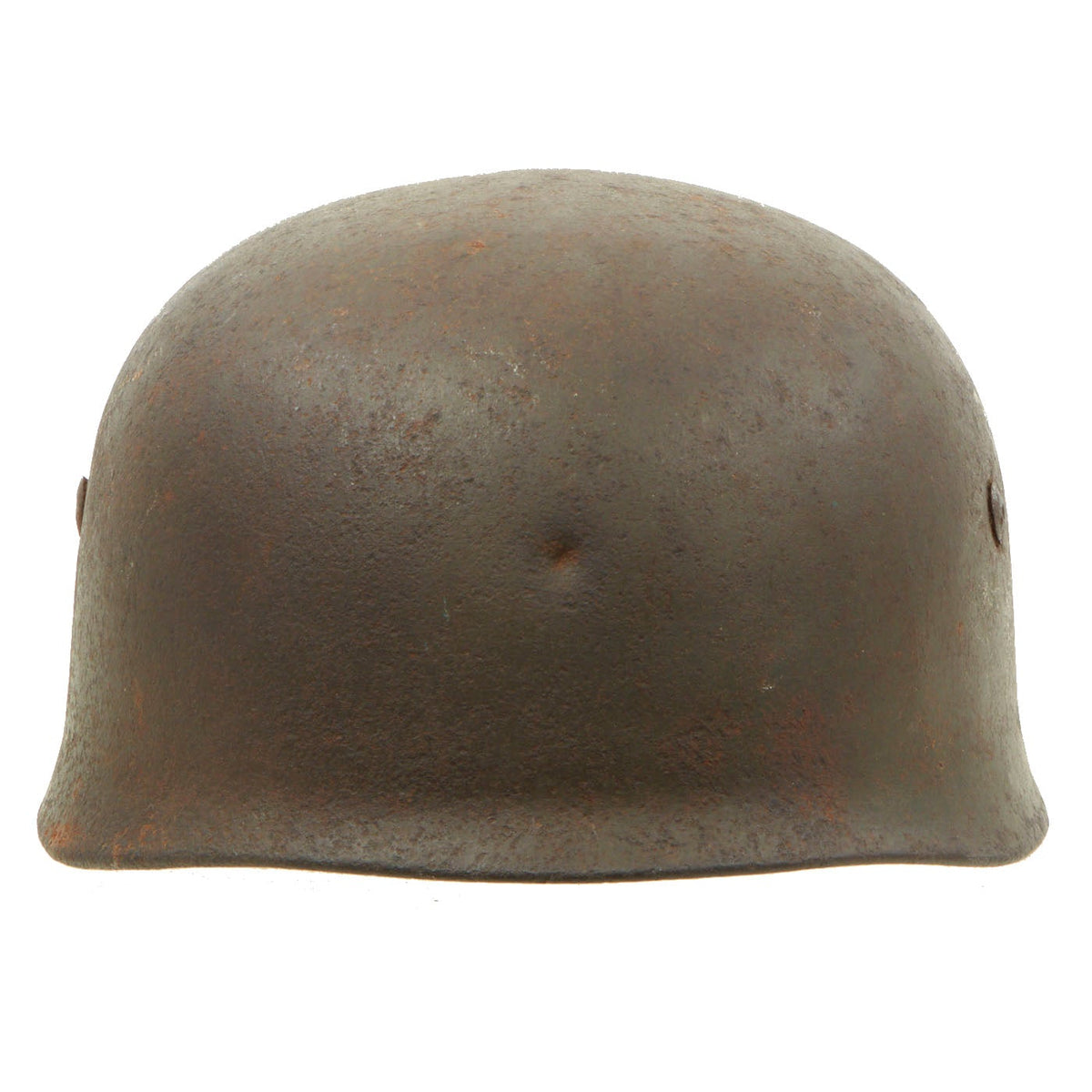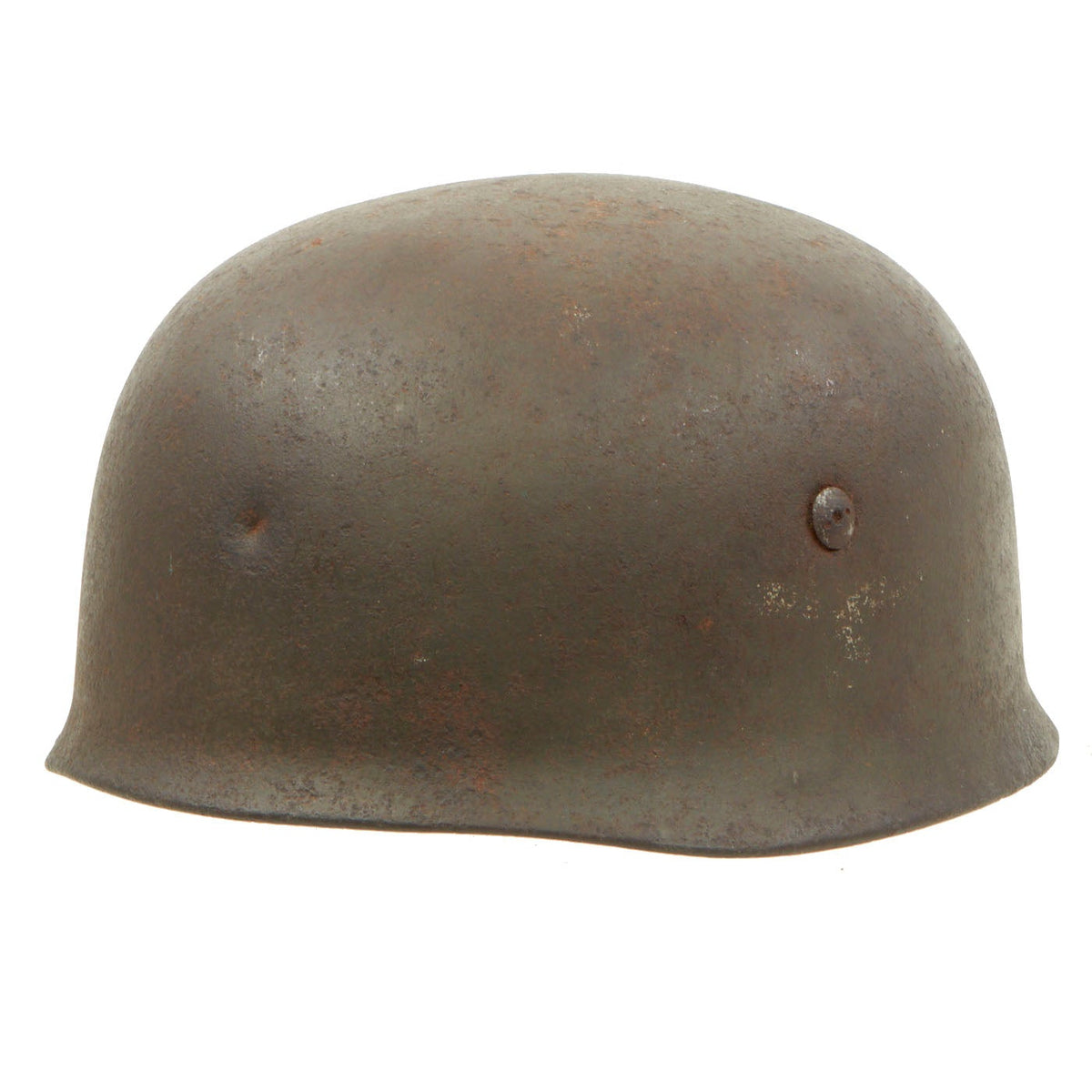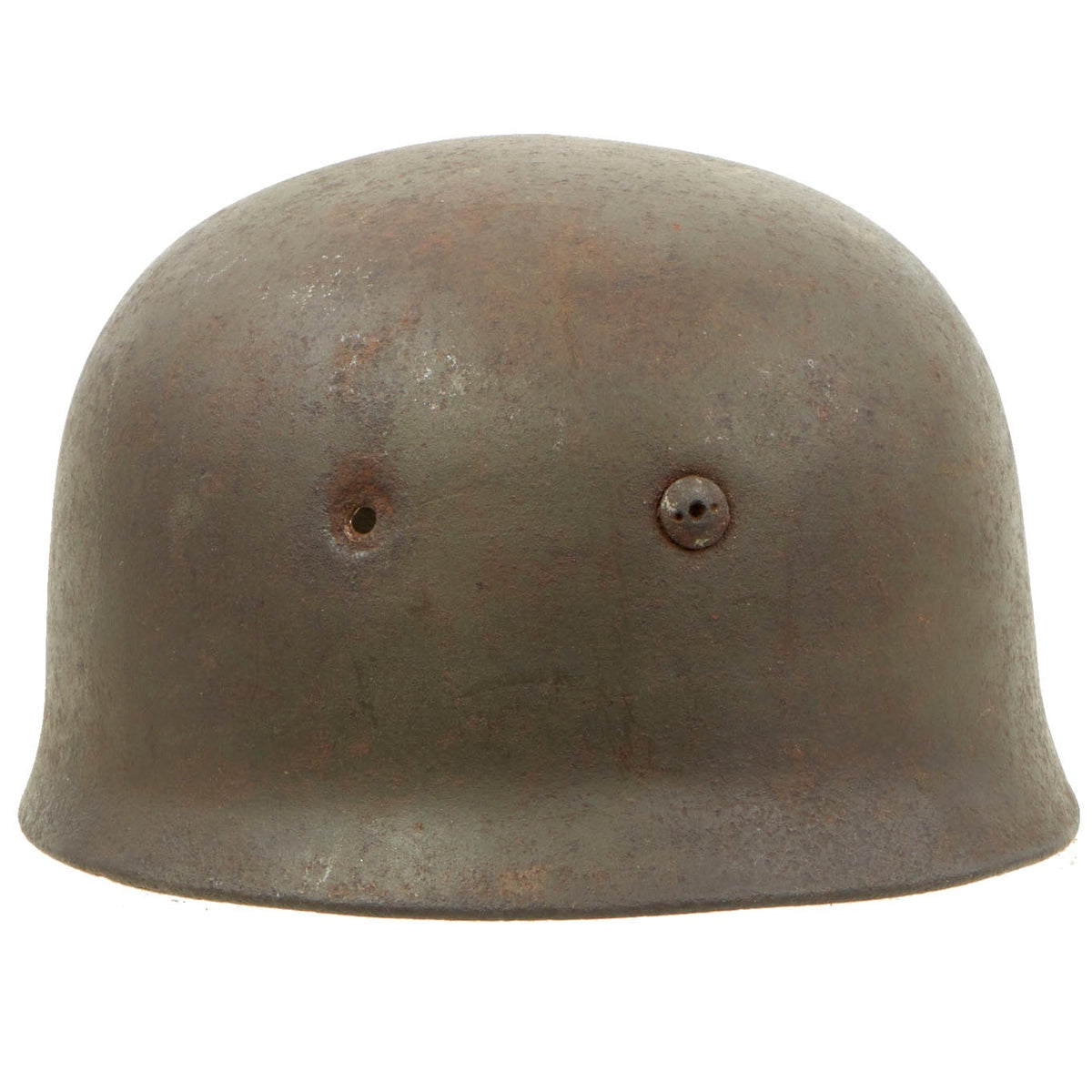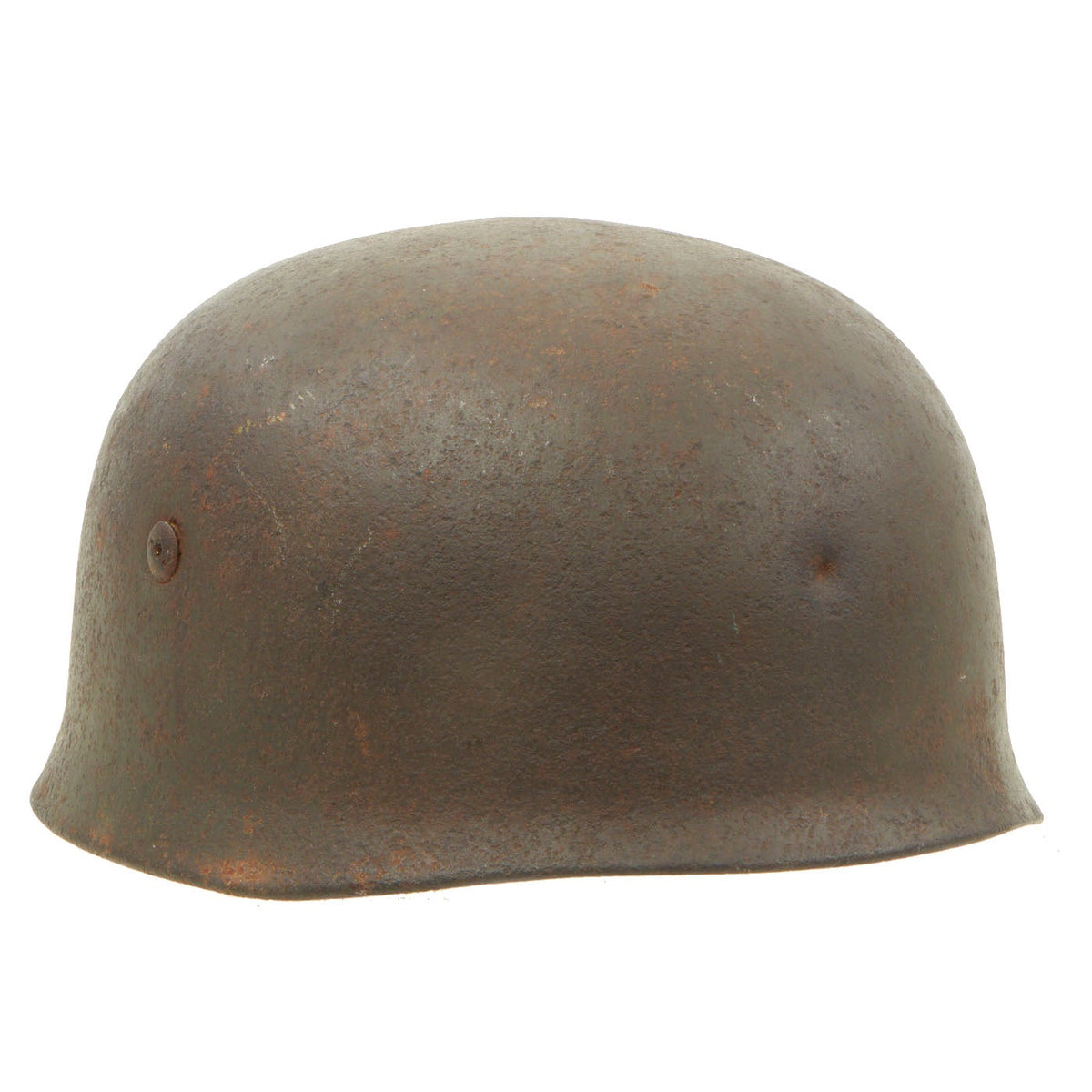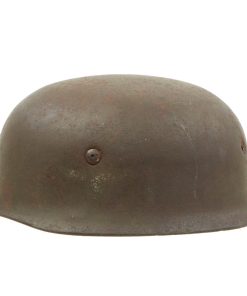Original German WWII Battlefield Pickup M38 Luftwaffe Fallschirmjäger Paratrooper Helmet Shell Original Items
$ 1.295,00 $ 323,75
Original Item: One of a Kind. This is a genuine “Battlefield Pickup” example of a German WWII M38 Luftwaffe Fallschirmjäger (Paratrooper) Helmet. It was recovered some time after the war in Europe, though unfortunately we do not know where it was found. The helmet had laid for some time undisturbed, so all of the original rigging and liner are completely absent, and it is now just a shell. Amazingly, there is still quite a bit of the original paint on the outside of the helmet, which is well preserved. The interior does not have paint and also a lot of surface rust, which has unfortunately removed the original markings. We measured it, and it measures approximately about 70cm around the liner holes, so it is probably a size 68-69, which would have fit a 56-57 liner.
The exterior shows signs of having a single Luftwaffe decal, but it is only just a ghosting. Many paratrooper helmets were never equipped with decals later in the war.
German Paratrooper helmets are highly desirable, and they are rare on the market in any condition. This battlefield pickup really IS a piece of history. This would be a great way to fill that missing spot in your German helmet collection. Ready to display!
Fallschirmjägerhelm M38
Fallschirmjägerhelm M38 ( M38 Heisler / M38 ) – was a German steel paratrooper helmet intended for Fallschirmjäger airborne units from World War II. Originally, the German airborne troops used the standard Stahlhelm M35 helmets throughout the German Army . It soon turned out, however, that this helmet was not suitable for parachuting, as it caused significant air resistance during the jump. A too loosely fastened helmet could have been torn from the jumper’s head, and if it was tightly fastened it could cause suffocation.
Therefore, from 1936, work was carried out at the Eisenhüttenwerke factory to create a helmet dedicated specifically to the airborne troops. Their effect was a parachute helmet designed by engineer Karl Heisler, which under the designation M38 was adopted by the army.
The M38 helmet was derived from the standard M35 helmet. However, it was smaller, more streamlined and with a significantly reduced hood. The front part of the hood was only marked, and the rear part was shortened to 1.8 cm. (in experimental versions – 2 cm). The rims of the bell were rolled up. The helmet bell was made in a series of operations from one piece of steel sheet 1.5 mm thick. It was produced in sizes marked as 66, 68 and 71.
The internal equipment of the experimental versions of the helmet was identical to that of the standard M35 helmet. In the version adopted for equipment, a new type of fascia was used, which better protected against possible injuries. For this purpose, the bell walls were additionally lined with a shock-absorbing micro-rubber insert cut into 7 “arms” with a thickness of 10 to 13 mm. The actual fit was in the form of a leather cap with round holes cut for ventilation. Both the micro-rubber insert and the leather cap were attached to an aluminum rim with a thickness of 1 mm. All interior fittings were bolted with four screws to the helmet bell.
A new type of lining was also used in the parachute helmet. The standard two-point suspension was replaced with a four-point “Y” -shaped suspension, which ensured better fit of the helmet on the head. In the model adopted as an accessory, the straps of the lining were widened to 20 mm and latches were introduced to protect the helmet against accidental unfastening.
The helmet’s bell was initially painted gray-blue. A national-colored shield on the right side and a Luftwaffe eagle decal on the left side were put on. Later during the war, the bell was painted gray-green or sand colored. Various covers and masking nets were also used. In winter conditions, the helmet bell was painted white.
Polish tankers from the 2nd Corps of the Polish Armed Forces in the West would use captured M38 helmets. The reason for this was their small size and the fact that they fit very tightly to the head. However, they were strictly forbidden to use them, as it happened that their own infantry mistook the tankers leaving their vehicles as Germans and opened fire on them.
Fast Shipping with Professional Packaging
Thanks to our longstanding association with UPS FedEx DHL, and other major international carriers, we are able to provide a range of shipping options. Our warehouse staff is expertly trained and will wrap your products according to our exact and precise specifications. Prior to shipping, your goods will be thoroughly examined and securely secured. We ship to thousands clients each day across multiple countries. This shows how we're dedicated to be the largest retailer on the internet. Warehouses and distribution centres can be located throughout Europe as well as the USA.
Note: Orders with more than one item will be assigned a processing date depending on the item.
Before shipping before shipping, we'll conduct a thorough inspection of the items you have ordered. Today, the majority of orders will be delivered within 48 hours. The delivery time will be between 3-7 days.
Returns
The stock is dynamic and we cannot completely manage it because multiple stakeholders are involved, including our factory and warehouse. So the actual stock may alter at any time. It's possible that you may not receive your order once the order has been made.
Our policy is valid for a period of 30 days. If you don't receive the product within 30 days, we are not able to issue a refund or an exchange.
You can only return an item if it is unused and in the same state as the day you received it. You must have the item in its original packaging.
Related products
Uncategorized
Australian WWII Owen MK1 Machine Carbine SMG Custom Fabricated Replica with Sling Original Items
Uncategorized
Uncategorized
Uncategorized
Uncategorized
Uncategorized
Uncategorized
Uncategorized
Uncategorized
Uncategorized
Uncategorized
Uncategorized
Armored Burgonet Helmet & Polearm from Scottish Castle Leith Hall Circa 1700 Original Items
Uncategorized
Armoured Fighting Vehicles of the World: AFVs of World War One (Hardcover Book) New Made Items
Uncategorized
Uncategorized
Uncategorized
Uncategorized
Uncategorized
